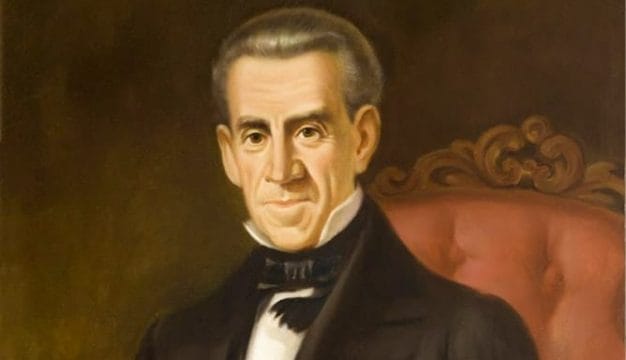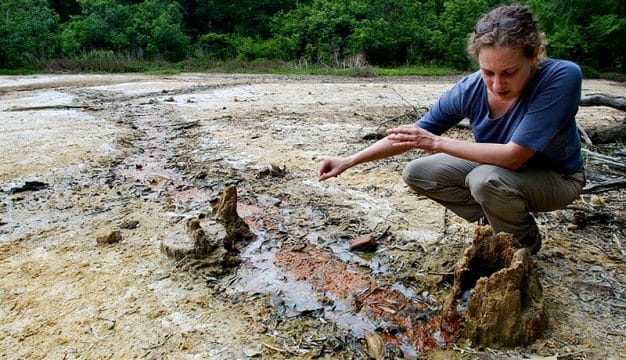William Phineas Browne
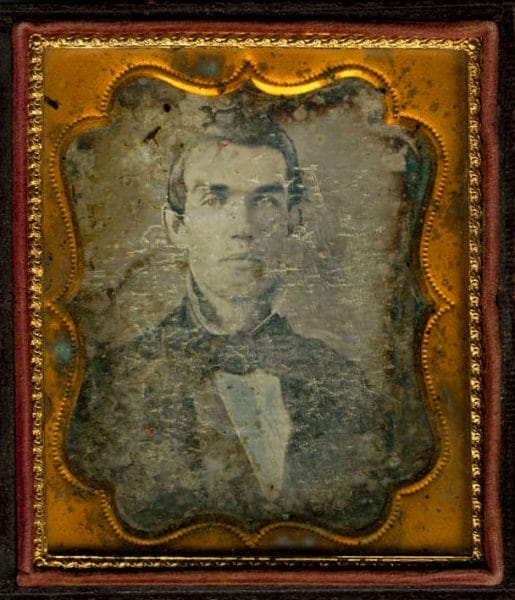 William Phineas Browne
William Phineas Browne (1804-1869), a leading pioneer of Alabama’s coal industry, operated the state’s first systematic underground coal mines near Montevallo, Shelby County, commencing in 1851. Browne was an attorney by training but pursued many and varied business interests, including mining coal and iron ore, constructing canals, and investing in real-estate ventures. In addition to his business interests, Browne was occasionally involved in politics, serving as an alderman in Mobile in 1841, a member of the Alabama Legislature in 1845-46, and a delegate to the 1860 Democratic National Convention.
William Phineas Browne
William Phineas Browne (1804-1869), a leading pioneer of Alabama’s coal industry, operated the state’s first systematic underground coal mines near Montevallo, Shelby County, commencing in 1851. Browne was an attorney by training but pursued many and varied business interests, including mining coal and iron ore, constructing canals, and investing in real-estate ventures. In addition to his business interests, Browne was occasionally involved in politics, serving as an alderman in Mobile in 1841, a member of the Alabama Legislature in 1845-46, and a delegate to the 1860 Democratic National Convention.
Browne was born on July 9, 1804, in Waltham, Vermont, to Phineas and Elizabeth Backus Browne. Browne’s father was called to service during the Revolutionary War and fought in the Battle of Saratoga. Phineas Browne, originally from Massachusetts, moved his family to Vermont, where he served several terms in that state’s legislature after the war. Elizabeth Backus Browne was a direct descendant of William Bradford, first governor of the Plymouth Colony that was settled by the Pilgrims arriving in 1620 on the Mayflower. The resourcefulness of William Phineas Browne was forged at an early age. His father died when he was only 14. By the time he was 18 in 1822, Browne was in New York City keeping the books for the business firm of Wood and Cook. In 1823, he went to Lebanon, Pennsylvania, to keep the books for his cousin John Ives’s Union Canal project. By 1825, Browne was in Vergennes, Vermont, studying law with local attorneys and serving a three-year probationary period. He passed the Vermont bar exam in 1829 and practiced law in that state until 1831.
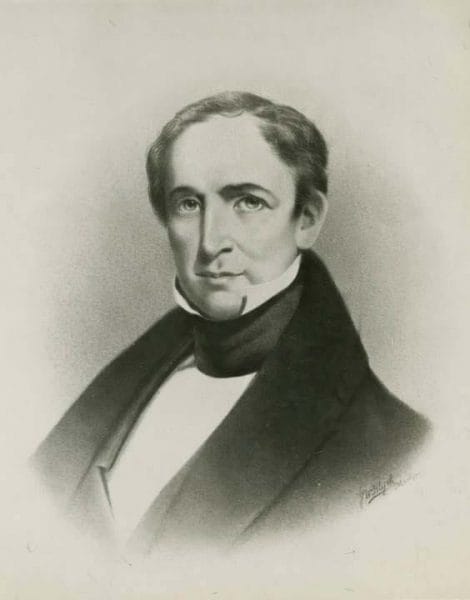 Henry Hitchcock
That year, Browne left Vermont for Muscle Shoals, Colbert County, where he again joined Ives, this time to work on the Tennessee Canal. Ives and Browne sold their shares in this project and moved to New Orleans to take on a larger contract for a canal connecting the new American Quarter with Lake Pontchartrain. In 1834, Browne sold his share in this project to Ives and teamed with Edwin Porter in running a steamship company that carried freight and mail daily between New Orleans and Mobile. Porter sold this company in 1835, forcing Browne to pursue other interests. By 1835, he was investing heavily in Mobile real estate in partnership with Henry Hitchcock, soon-to-be associate justice and chief justice of the Alabama Supreme Court. The wealth that Browne had begun to accumulate from these investments was wiped out with the onset of the Panic of 1837. To make matters worse, many of Browne’s holdings were later tied up for years in the estate of Hitchcock, who died in 1839.
Henry Hitchcock
That year, Browne left Vermont for Muscle Shoals, Colbert County, where he again joined Ives, this time to work on the Tennessee Canal. Ives and Browne sold their shares in this project and moved to New Orleans to take on a larger contract for a canal connecting the new American Quarter with Lake Pontchartrain. In 1834, Browne sold his share in this project to Ives and teamed with Edwin Porter in running a steamship company that carried freight and mail daily between New Orleans and Mobile. Porter sold this company in 1835, forcing Browne to pursue other interests. By 1835, he was investing heavily in Mobile real estate in partnership with Henry Hitchcock, soon-to-be associate justice and chief justice of the Alabama Supreme Court. The wealth that Browne had begun to accumulate from these investments was wiped out with the onset of the Panic of 1837. To make matters worse, many of Browne’s holdings were later tied up for years in the estate of Hitchcock, who died in 1839.
Browne was able to recover financially by opening a small corn-milling business and practicing law. He also became involved in politics during this period and was elected alderman in Mobile in 1841. In 1845, Browne ran on the Democratic ticket and won election to the legislature as the state representative for the Mobile district. While serving in the legislature in Tuscaloosa, Browne met his future wife, Margaret Elizabeth Stevens. Margaret’s father was Judge Henry Wilbourne Stevens, another native New Englander who was one of Alabama’s first judicial officers prior to statehood. William and Margaret were married on August 9, 1846, and had seven children prior to Margaret’s death in 1862.
After his marriage, Browne acquired land near Margaret’s family in Shelby County, portions of which were located within the Cahaba coal field. Upon discovering three significant seams of coal on the western edge of his property, Browne began lobbying the legislature and railroad companies to build a rail line through the town of Montevallo so he could mine and market the coal on his property. In a report to the Alabama and Tennessee River Railroad Company, Browne estimated the three seams on his property to contain 1.6 million tons of coal. Browne began mining the coal in 1851 without the benefit of a rail line. Assisted by two enslaved workers, he removed the first coal from his property and hauled it by wagon to the Cahaba River. From there the coal was transported by barge to Selma, where Browne received his first order from the George O. Baker Company for two car loads of coal at $4.50 per ton.
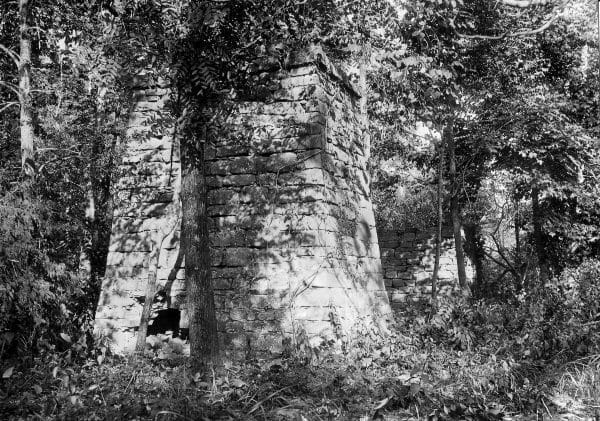 Little Cahaba Iron Works (Brighthope)
From the outset, Browne struggled with transportation and labor problems to keep his mines running. Maintaining a constant workforce proved difficult, as most planters were reluctant to allow their slaves to work underground, and free labor proved to be unreliable. By 1856, however, Browne had leased enough slaves to remove five tons of coal per day from his mines. Transportation problems eased in 1853, when the Tennessee and Alabama River Railroad extended to Montevallo, enabling Browne to lay a branch railway to the coal mines on his property. His coal business continued to grow. In 1858, he contracted to deliver 1,000 tons of coal to the Montgomery Gas and Light Company (now Energen Corporation). During the summer of 1861, more than 1,500 tram-loads of coal were extracted from the mines. In 1862, Browne contracted with the Confederate government to furnish it 4,000 tons of coal. The Confederate arsenal at Selma was also likely supplied by Brighthope, an iron blast furnace or forge constructed by Browne on the Little Cahaba River in Bibb County. In 1863, Browne sold his coal mines to George Baker, but he continued to run the mines when he leased them back from Baker in 1864.
Little Cahaba Iron Works (Brighthope)
From the outset, Browne struggled with transportation and labor problems to keep his mines running. Maintaining a constant workforce proved difficult, as most planters were reluctant to allow their slaves to work underground, and free labor proved to be unreliable. By 1856, however, Browne had leased enough slaves to remove five tons of coal per day from his mines. Transportation problems eased in 1853, when the Tennessee and Alabama River Railroad extended to Montevallo, enabling Browne to lay a branch railway to the coal mines on his property. His coal business continued to grow. In 1858, he contracted to deliver 1,000 tons of coal to the Montgomery Gas and Light Company (now Energen Corporation). During the summer of 1861, more than 1,500 tram-loads of coal were extracted from the mines. In 1862, Browne contracted with the Confederate government to furnish it 4,000 tons of coal. The Confederate arsenal at Selma was also likely supplied by Brighthope, an iron blast furnace or forge constructed by Browne on the Little Cahaba River in Bibb County. In 1863, Browne sold his coal mines to George Baker, but he continued to run the mines when he leased them back from Baker in 1864.
The Civil War took its toll on Browne and his business interests. He reported to his northern friends and relatives that he lost at least a quarter of a million dollars due to the destruction inflicted by Wilson’s Raiders during the last days of the war. Browne’s failing health and a disagreement with George Baker in 1867 eventually ended the career of Alabama’s pioneer of underground coal mining.
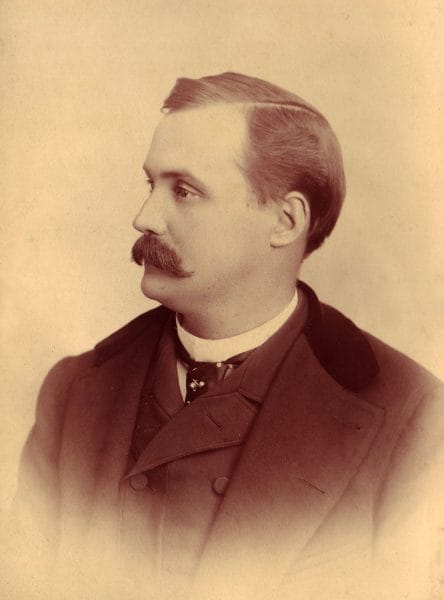 Cecil Browne
Although he lacked the capital of the future industrialists of the Birmingham district, Browne’s efforts nevertheless contributed to Shelby County’s virtual monopoly of the state’s coal production prior to the Civil War. Browne also employed innovative methods in operating his mines. In February 1861, for example, he contracted with English mining engineer Joseph Squire to sink a 100-foot slope (a slanted mine shaft) in the Montevallo seam, which was the second slope in Alabama to employ steam-powered hoisting technology to remove the coal from the mine. Tiring of the time-consuming method of bailing water by hand from his mine shafts, Browne travelled to Mobile and purchased a steam engine to pump the water.
Cecil Browne
Although he lacked the capital of the future industrialists of the Birmingham district, Browne’s efforts nevertheless contributed to Shelby County’s virtual monopoly of the state’s coal production prior to the Civil War. Browne also employed innovative methods in operating his mines. In February 1861, for example, he contracted with English mining engineer Joseph Squire to sink a 100-foot slope (a slanted mine shaft) in the Montevallo seam, which was the second slope in Alabama to employ steam-powered hoisting technology to remove the coal from the mine. Tiring of the time-consuming method of bailing water by hand from his mine shafts, Browne travelled to Mobile and purchased a steam engine to pump the water.
Browne died on January 13, 1869, in Talladega, Talladega County, at the home of his son. He left behind an interesting family that achieved varying levels of notoriety. William Bradford became a lawyer in Shelby County and served for many years as the mayor of Columbiana. Cecil also became a lawyer, served as a city judge in Talladega, represented Talladega and Clay Counties in the state legislature, and was a delegate to the Constitutional Convention of 1901. Margaret (Rubé) became an actress, assuming the stage name of Florence Elmore and appearing on the stage in London. Nina became the social editor of the Montgomery Advertiser.
Further Reading
- Armes, Ethel. The Story of Coal and Iron in Alabama. 1910. Reprint, Leeds, Ala.: Beechwood Books, 1987.
- Day, James Sanders. “‘Diamonds in the Rough’: A History of Alabama’s Cahaba Coal Field.” Ph.D. diss., Auburn University, 2002.
- Knapp, Virginia Estella. “William Phineas Browne, Business Man and Pioneer Mine Operator of Alabama.” Alabama Review 3 (April 1950): 108-22.
- ———. “William Phineas Browne, Business Man and Pioneer Mine Operator of Alabama.” Alabama Review 3 (July 1950): 193-99.
- Lewis, Herbert James. Brighthope: The Life And Times of William Phineas Browne. Birmingham, Ala.: n.p., 2020.
